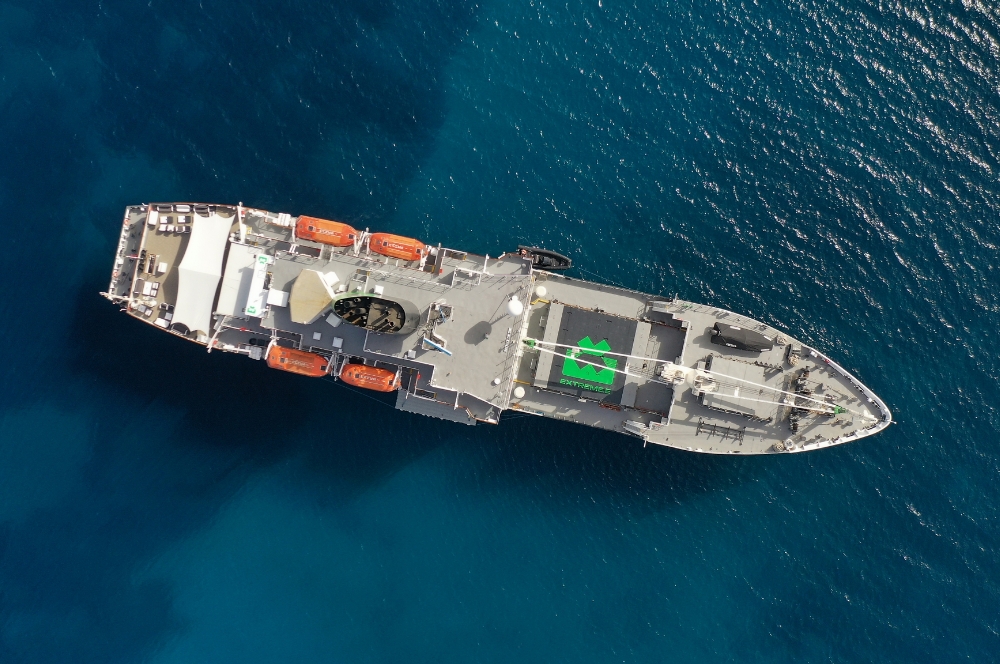Driving Impact for a Greener Marine Industry
Let’s sail together to Net Zero Seas

Active Offsetting
revolutionizes the way carbon management is handled by allowing for real-time emissions monitoring. Unlike traditional methods that rely on delayed data and retrospective calculations, Active Offsetting provides immediate and continuous oversight of emissions as they happen. This capability gives organizations a clear, up-to-date view of their carbon footprint.
An active approach
Unlike traditional methods where emissions are calculated annually and carbon credits are retired retrospectively, Active Offsetting leverages direct sensor connections, IoT devices, and manual data gathering to procure real-time emissions data and direct retirement.
Active Offsetting focuses on precision offsetting, such as Scope 1 emissions—those directly produced by an organization’s operations, ensuring that immediate, accurate action is taken at the source of
emissions.
Active Offsetting empowers organizations to measure, monitor , and take immediate action to manage their environmental impact more effectively , without waiting for delayed reports or data.
“We are linking high integrity carbon projects with engaged organizations”
Carbon Projects

ARR Carbono Verde
See more
The ARR Carbono Verde project focuses on afforesting and reforesting degraded land in the Amazon by planting native species to restore biodiversity and boost carbon sequestration. Since its launch, the project has aimed to combat climate change while benefiting local communities through sustainable forest management.

México: Project VCS 1041
See more
This initiative involves the construction of a wind farm with an installed capacity of 102 MW in Mexico. The renewable energy generated will be supplied to the Mexican electrical grid, reducing greenhouse gas emissions by replacing fossil fuel-based electricity generation.

Colombia: Cercarbono 109-V20
See more
Located in Puerto Gaitán, Meta, Colombia, this project consists of a photovoltaic solar park generating approximately 50,578 MWh annually, preventing the emission of 31,141 tons of CO₂e per year. It also contributes to Sustainable Development Goals related to quality education, affordable and clean energy, decent work and economic growth, and climate action.

Colombia: Cercarbono 114
See more
Developed in 18 Afro-descendant communities in the Nariño Department, Colombia, this REDD+ project aims to reduce emissions from deforestation and forest degradation across 371,749 hectares over 20 years, with a projected reduction of 9,416,407 tons of CO₂e. Activities include community empowerment, capacity building, and natural resource conservation, generating social, economic, cultural, and ecological benefits
Benefits and Key Aspects

Immediate Action
Facilitates immediate action to mitigate emissions and propels a new era of sustainable practices.
Efficiency
Transparency
Direct Retirement
Carbon credits are retired through EcoRegistry using a transparent and traceable blockchain-based mechanism, guided by predefined attributes, and accompanied by an auditable retirement certificate. Including EcoRegistry in this process ensures that the retirement of credits is fully automated and verifiable.
Process
Active Offsetting follows a systematic and transparent process to ensure real-time management of carbon emissions. The process includes the following steps:

1. Data Collection
Daily collection of carbon footprint data using direct sensor connections, IoT devices or manual reporting. This includes assessing fuel consumption, load factors, and other relevant variables.

2. Data Transmission
Secure and immediate transmission of the collected data to a centralized platform for processing.

3. Data Processing
Analyzing the data to determine the exact carbon footprint and calculate the corresponding amount of carbon credits required for offsetting.

4. Carbon Credits Calculation
Calculation of the necessary carbon credits using the processed data. This step leverages blockchain technology to ensure accuracy and transparency.

5. Carbon Credits Retirement
Automatic retirement of the calculated carbon credits through the blockchain platform. This ensures that the carbon emissions are compensated in real-time.

6. Transparency and Traceability
Each transaction of carbon credits retirement is recorded on the blockchain ledger, providing an immutable, auditable and transparent history of the offsetting activities.

7. Reporting and Compliance
Regular generation of reports that detail the carbon footprint, the retired carbon credits, and the carbon projects from which the credits are sourced.

8. Concept of Repeat
Active Offsetting is a continuous process that monitors and offsets emissions in real time at regular intervals. This ensures ongoing carbon footprint management, keeping organizations aligned with sustainability goals without waiting for annual reviews or delayed reports.
Ready to Make a Difference?
Frequently Asked Questions
What is Active Offsetting?
Active Offsetting is a real-time approach to carbon management, using advanced technologies to monitor and offset emissions as they occur, ensuring immediate and accurate carbon footprint management.
What is Marine Active Offsetting?
Marine Active Offsetting is specifically tailored for the marine industry, focusing on real-time monitoring and offsetting of emissions from marine vessels. It leverages the same advanced technologies as Active Offsetting to provide accurate, transparent, and efficient carbon management for maritime operations.
What technologies are used in Active Offsetting?
How does the demo work?
The demo showcases how Active Offsetting integrates into your operations, providing a detailed walkthrough of the real-time data collection, processing, carbon credit calculation, and blockchain-based retirement process. You will see firsthand how the system ensures transparency, efficiency, and compliance.
What is direct retirement?
What kind of impact can we expect?
Who can benefit from Active Offsetting?
How does blockchain technology ensure transparency?
Blockchain technology provides a secure, decentralized ledger that records every transaction of carbon credit retirement. This ledger is immutable, ensuring that the history of offsetting activities is transparent and traceable.
